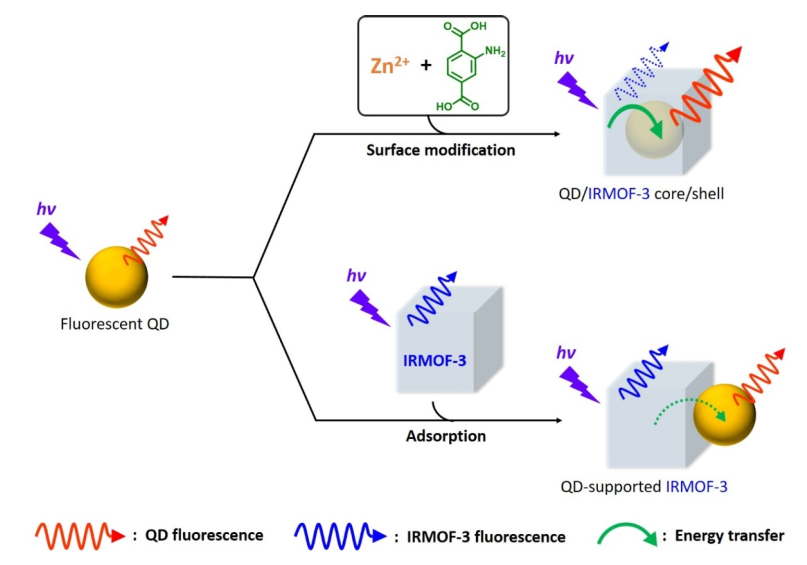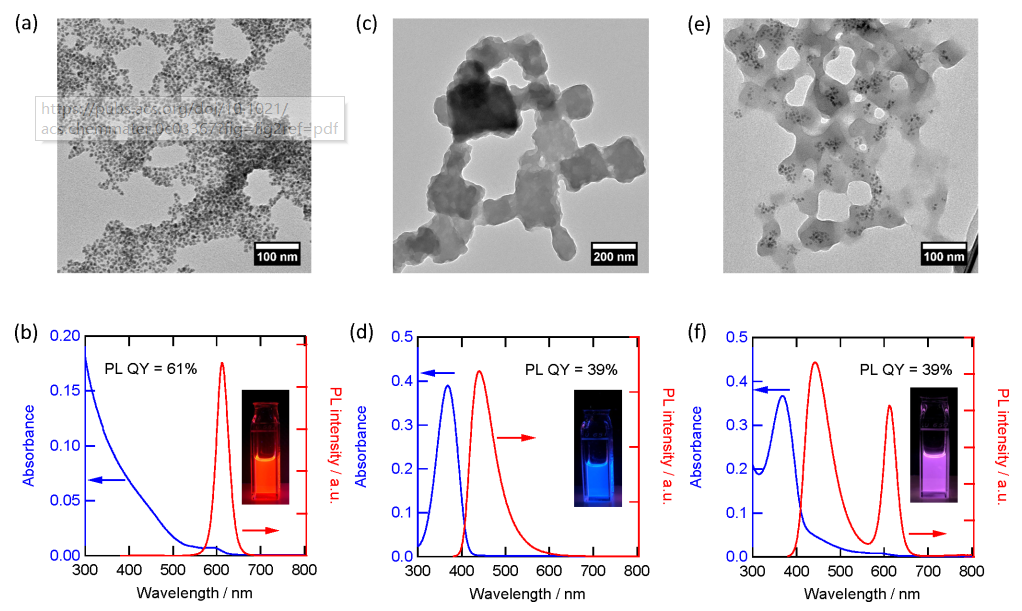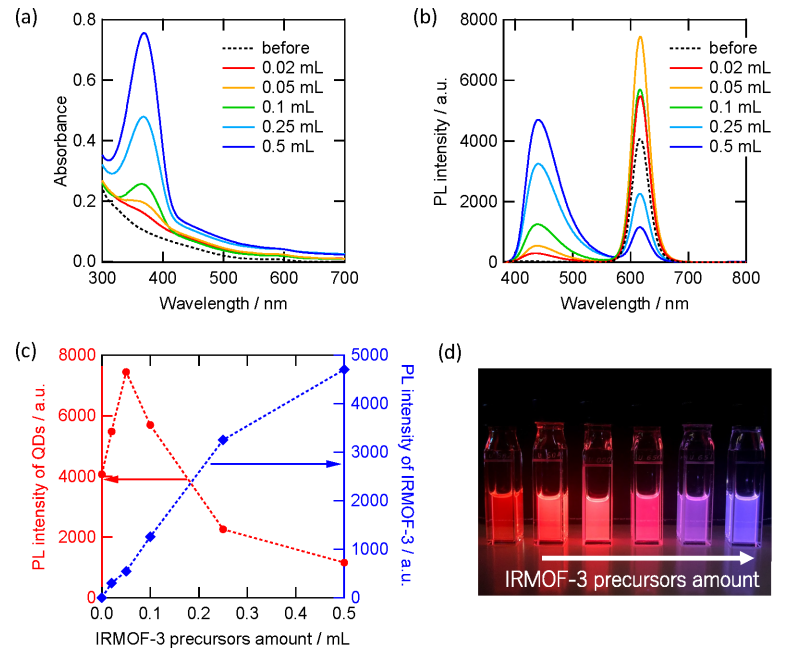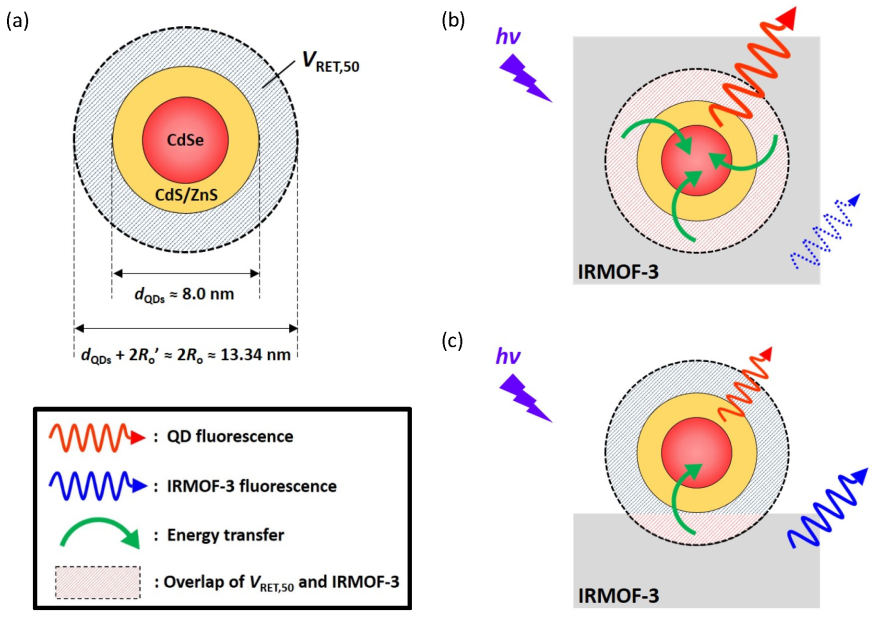
hotline:
17715390137
Tel/Wechat:
18101240246 (Technology)
0512-68565571
Email:mxenes@163.com (Sales Engineer)bkxc.bonnie@gmail.com
Scan the code to follow or search the official account on WeChat:
2D Materials Fronrier After paying attention,
click on the lower right corner to contact us,
Enter enterprise WeChat.
Professional Services Online


Author: Kohei Kumagai Corresponding author: Susumu Kuwabata, Taro Uematsu communication unit: Osaka University
The metal-organic framework is a microporous crystalline material self-assembled by metal ions and organic connectors. Due to its adjustable pore size, it has been widely used in many fields such as energy conversion and photophysical chemistry.
Recently, Professor Susumu Kuwabata of Osaka University, Taro Uematsu and others have combined semiconductor quantum dots and MOF with light trapping ability to successfully enhance the luminous efficiency of quantum dots. This research provides new ideas for enhancing the photoluminescence efficiency of semiconductor quantum dots, and also expands the application range of MOF structures with light trapping capabilities.

Figure 1. Schematic diagram of a luminescent material composed of semiconductor QD and light harvesting MOF.
The semiconductor quantum dots are modified on the surface of MOF with light trapping ability, and the photoluminescence efficiency of the semiconductor quantum dots is enhanced through energy transfer.

Figure 2. Structural characterization.
Both steady-state excitation spectra and fluorescence lifetime tests confirmed that the fluorescence enhancement of the composite material benefits from the excellent light-trapping ability of the MOF structure.

Figure 3. Ultraviolet absorption spectrum.
The energy transfer efficiency of semiconductor quantum dots when they are completely covered by MOF crystals is 11 times higher than when they are only attached to the surface of MOF crystals. Under the optimal conditions, the photoluminescence intensity almost doubled, which shows the advantages of using photoluminescence MOFs as surface modifiers.

Figure 4. CdSe/CdS/ZnS core multi-shell QD with a diameter of 8 nm.
Kohei Kumagai, et al. Photoluminescence Enhancement by Light Harvesting of Metal--Organic Frameworks Surrounding Semiconductor Quantum Dots. Chem. Mater. 2020.DOI: 10.1021/acs.chemmater.0c03367https://pubs.acs.org/doi/abs/10.1021 /acs.chemmater.0c03367
Information source: Nanoman
This information is from the Internet for academic exchanges. If there is any infringement, please contact us and delete it immediately

| Reminder: Beijing Beike New Material Technology Co., Ltd. supplies products only for scientific research, not for humans |
| All rights reserved © 2019 beijing beike new material Technology Co., Ltd 京ICP备16054715-2号 |